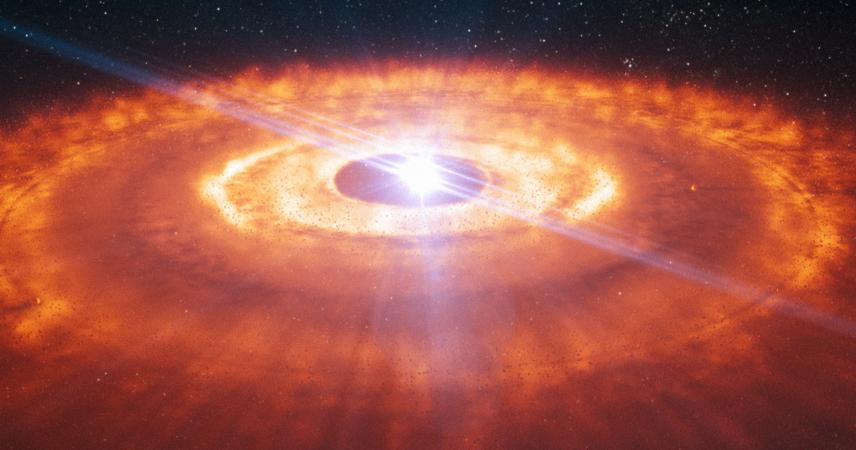In our Galaxy there are huge clouds of gas and dust. In those regions where its density is greatest, this material will start to contract, and will create a protostar with an increasingly denser core with such high pressure that this sets off nuclear reactions. These reactions will stabilise and the star may “live” for millions of years in a certain equilibrium.
Are planets always formed around a star? The answer is that we still don’t know, but we do know that planetary formation is something that is very common in our galaxy and that, in broad terms, this process can be described in three phases.
You can follow the three phases in the audiovisual screened in the middle of the table. You can also walk around the table to follow the explanations marked as 1, 2 and 3. You will also be able to appreciate the texture of each stage through a 3D print that gives an idea of the dominant component: gas or dust.
This project has been carried out by the Millenium Nucleus on Planetary Formation (NPF) in Chile.
Phase 1
At the same time as the star gains material from its birth cloud, around this a disc of the same material is formed, which contains 99% gas and only 1% dust.
As the star continues to be formed, but starts to shine, it pushes the material in the disc outwards. This is why the outside of the disc is larger.
If you take a good look at it, the texture of the disc is soft and it is bulky because it mainly consists of gas.
Phase 2
In a few million years, the cavity in the centre has become larger and the gas disc has split, and left a new hollow. This is because the dust forms lumps, that due to the effect of gravity collide with each other and gradually form larger and larger bodies. If any of these bodies grows in mass until it becomes what will be a planet, then this new hollow is created.
Phase 3
The gas around the star has dispersed, and left two belts formed by rocky remnants and dust. In our solar system, the more distant one is known as the Kuiper belt, and the remnants that it contains are frozen. This is where the comets come from that amaze us with their gas tails when they pass close to the Sun.
The other one, that has a smaller radius and is closer to the star, is known as the asteroid belt.
In our solar system, the giant planets are located between these two belts, and we understand that they could have built up large masses of gas during their formation, when the disc was rich in this element. The rocky planets, including our home, are between the asteroid belt and the star.
This is how our solar system was formed about 4.6 billion years ago.
Once you have gone completely around the table, you will have reached the initial stop area once again. Go back along the same route that you followed to reach the table, if you want to learn more about the planets in the solar system, their size, composition and texture.
